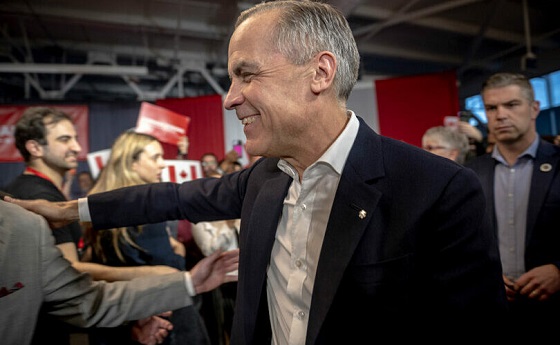Alberta
Putting an end to the photo radar cash cow

Alberta’s government is ending the photo radar cash cow, eliminating areas where photo radar is used to generate revenue with no traffic safety benefit.
Many Albertans have expressed growing frustration with photo radar, questioning its focus on revenue rather than safety. In response to these concerns, Alberta’s government paused the introduction of new photo radar equipment and locations on Dec. 1, 2019. Now, after thorough analysis and consultation, Alberta’s government is taking bold steps to restore public trust.
Effective April 1, 2025, ticketing on numbered provincial highways will end as photo radar will be restricted to school, playground and construction zones. Intersection safety devices in Alberta will also be restricted to red light enforcement only, ending the ‘speed-on-green’ ticketing function.
Municipalities will also be able to request that the province approve additional photo radar locations on an exceptional basis, for high collision areas and where other safety measures cannot be implemented effectively. These types of exceptions will be subject to an audit every two years to assess the effectiveness of photo radar at the site in reducing collisions.
“This is great news for Alberta drivers. These changes will once and for all kill the photo radar cash cow in Alberta. Albertans can be confident that photo radar will only be used to improve traffic and roadside worker safety and not to make money.”
The next step for government is to review every existing photo radar site in the province over the next four months. As part of that review, those that are deemed ineffective, or outside of a school, playground, or construction zone, will be removed. This is expected to reduce the current 2,200 approved sites by 70 per cent, which would also better align the amount of photo radar with other provinces. Currently, there are about 70 per cent more photo radar sites used in 24 Alberta municipalities than the next highest province. Allowing these changes to be implemented over the next four months provides municipalities time to transition, update equipment and adjust contracts with vendors.
“I’m happy to see the province focusing photo radar on playground and construction zones. We need to prioritize safety where it matters most – protecting our children and workers on Calgary’s roads. I’m proud to support this vital step toward safer communities.”
“It is vital we maintain safety where it matters most—around our schools, playgrounds and construction zones. These are areas where enforcement can genuinely protect lives, not just generate revenue. With this new policy change, we’ll see more officers back in neighbourhoods and that visibility will help tackle the growing issues of crime and disorder – a top priority for Edmontonians and Albertans.”
“The Minister’s announcement will ensure that the use of photo radar is focused on enhancing traffic safety on high-risk roadways. RMA looks forward to learning how current photo radar sites will be assessed and is optimistic that this will result in an approach that supports safer roads without unfairly penalizing drivers.”
Municipalities will be encouraged to use traffic-calming measures to improve traffic safety, including speed warning signs, speed tables (large flat speed bump), public education campaigns and other tools designed to improve traffic safety. The province will also help make roads safer by providing municipalities with support to reengineer roads and intersections that have been proven to be unsafe.
Quick facts
- Alberta first introduced photo radar in 1987.
- All photo radar sites were removed from ring roads in Calgary and Edmonton on December 1, 2023.
- The government engaged with municipalities in June and August 2024 about photo radar and specifically to discuss solutions to eliminate ‘fishing holes.’
- The top five revenue-generating sites from last year are:
- Strathcona County – Baseline Road/17 St., 52,558 tickets (144/day) $5,956,573 in fines
- Edmonton – Gateway Blvd./34 Ave., 23,977 tickets (144/day) $2,717,393 in fines
- Edmonton – 170 St./118 Ave., 20,241 tickets (55/day) $2,293,980 in fines
- Calgary – Beddington Tr./Country Hills Blvd., 19,337 tickets (53/day) $2,173,167 in fines
- Edmonton – 127 St./126 Ave., 18,705 tickets (51/day), $2,119,900 in fines
Related information
Alberta
CPP another example of Albertans’ outsized contribution to Canada

From the Fraser Institute
By Tegan Hill
Amid the economic uncertainty fuelled by Trump’s trade war, its perhaps more important than ever to understand Alberta’s crucial role in the federation and its outsized contribution to programs such as the Canada Pension Plan (CPP).
From 1981 to 2022, Albertan’s net contribution to the CPP—meaning the amount Albertans paid into the program over and above what retirees in Alberta received in CPP payments—was $53.6 billion. In 2022 (the latest year of available data), Albertans’ net contribution to the CPP was $3.0 billion.
During that same period (1981 to 2022), British Columbia was the only other province where residents paid more into the CPP than retirees received in benefits—and Alberta’s contribution was six times greater than B.C.’s contribution. Put differently, residents in seven out of the nine provinces that participate in the CPP (Quebec has its own plan) receive more back in benefits than they contribute to the program.
Albertans pay an outsized contribution to federal and national programs, including the CPP because of the province’s relatively high rates of employment, higher average incomes and younger population (i.e. more workers pay into the CPP and less retirees take from it).
Put simply, Albertan workers have been helping fund the retirement of Canadians from coast to coast for decades, and without Alberta, the CPP would look much different.
How different?
If Alberta withdrew from the CPP and established its own standalone provincial pension plan, Alberta workers would receive the same retirement benefits but at a lower cost (i.e. lower CPP contribution rate deducted from our paycheques) than other Canadians, while the contribution rate—essentially the CPP tax rate—to fund the program would likely need to increase for the rest of the country to maintain the same benefits.
And given current demographic projections, immigration patterns and Alberta’s long history of leading the provinces in economic growth, Albertan workers will likely continue to pay more into the CPP than Albertan retirees get back from it.
Therefore, considering Alberta’s crucial role in national programs, the next federal government—whoever that may be—should undo and prevent policies that negatively impact the province and Albertans ability to contribute to Canada. Think of Bill C-69 (which imposes complex, uncertain and onerous review requirements on major energy projects), Bill C-48 (which bans large oil tankers off B.C.’s northern coast and limits access to Asian markets), an arbitrary cap on oil and gas emissions, numerous other “net-zero” targets, and so on.
Canada faces serious economic challenges, including a trade war with the United States. In times like this, it’s important to remember Alberta’s crucial role in the federation and the outsized contributions of Alberta workers to the wellbeing of Canadians across the country.
Alberta
Made in Alberta! Province makes it easier to support local products with Buy Local program

Show your Alberta side. Buy Local. |
When the going gets tough, Albertans stick together. That’s why Alberta’s government is launching a new campaign to benefit hard-working Albertans.
Global uncertainty is threatening the livelihoods of hard-working Alberta farmers, ranchers, processors and their families. The ‘Buy Local’ campaign, recently launched by Alberta’s government, encourages consumers to eat, drink and buy local to show our unified support for the province’s agriculture and food industry.
The government’s ‘Buy Local’ campaign encourages consumers to buy products from Alberta’s hard-working farmers, ranchers and food processors that produce safe, nutritious food for Albertans, Canadians and the world.
“It’s time to let these hard-working Albertans know we have their back. Now, more than ever, we need to shop local and buy made-in-Alberta products. The next time you are grocery shopping or go out for dinner or a drink with your friends or family, support local to demonstrate your Alberta pride. We are pleased tariffs don’t impact the ag industry right now and will keep advocating for our ag industry.”
Alberta’s government supports consumer choice. We are providing tools to help folks easily identify Alberta- and Canadian-made foods and products. Choosing local products keeps Albertans’ hard-earned dollars in our province. Whether it is farm-fresh vegetables, potatoes, honey, craft beer, frozen food or our world-renowned beef, Alberta has an abundance of fresh foods produced right on our doorstep.
Quick facts
- This summer, Albertans can support local at more than 150 farmers’ markets across the province and meet the folks who make, bake and grow our food.
- In March 2023, the Alberta government launched the ‘Made in Alberta’ voluntary food and beverage labelling program to support local agriculture and food sectors.
- Through direct connections with processors, the program has created the momentum to continue expanding consumer awareness about the ‘Made in Alberta’ label to help shoppers quickly identify foods and beverages produced in our province.
- Made in Alberta product catalogue website
Related information
-

 2025 Federal Election2 days ago
2025 Federal Election2 days agoBREAKING: THE FEDERAL BRIEF THAT SHOULD SINK CARNEY
-

 2025 Federal Election2 days ago
2025 Federal Election2 days agoCHINESE ELECTION THREAT WARNING: Conservative Candidate Joe Tay Paused Public Campaign
-

 2025 Federal Election1 day ago
2025 Federal Election1 day agoMark Carney Wants You to Forget He Clearly Opposes the Development and Export of Canada’s Natural Resources
-

 International1 day ago
International1 day agoPope Francis’ body on display at the Vatican until Friday
-

 2025 Federal Election1 day ago
2025 Federal Election1 day agoCanada’s pipeline builders ready to get to work
-

 Business1 day ago
Business1 day agoHudson’s Bay Bid Raises Red Flags Over Foreign Influence
-

 2025 Federal Election15 hours ago
2025 Federal Election15 hours agoFormer WEF insider accuses Mark Carney of using fear tactics to usher globalism into Canada
-

 International2 days ago
International2 days agoPope Francis’ funeral to take place Saturday

